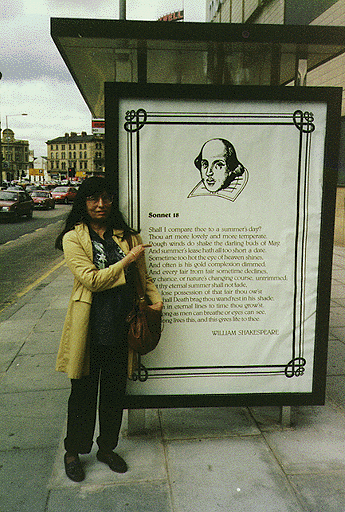
Bhama Srinivasan
Professor of Mathematics
Here are a few quick facts about me. I obtained my Ph.D at the University
of Manchester, England under the direction of J.A. (Sandy) Green. I have
been at UIC since 1980. My research is in the area of Group theory, specifically
in the theory of Representations of finite groups. Like many of my colleagues
I have taught courses at all levels in our Department, ranging from Calculus
to Representation Theory. (Contrary to what my picture says, I don't teach
Shakespeare. However, Shakespeare was PreCalculus, wasn't he?)
ADDRESS
Department of Mathematics, Statistics, and Computer Science (M/C 249)
University of Illinois at Chicago
851 S. Morgan Street
Chicago, IL 60607-7045
e-mail: srinivas@uic.edu
Office Phone: (312) 413-2160
Fax: (312) 996-1491
RESEARCH
My research is in the area of Representation Theory of Finite Groups. Since
the structure of an abstract finite group is often difficult to understand,
one tries to represent it by a group of matrices over some field. The theory
of finite group representations has had a rich history over the last 100
years (see e.g. an article by Charles Curtis in the Math. Intelligencer
14 (1992)). In this century a central figure was Richard Brauer who founded
the theory of modular representations of finite groups.
In particular I work with finite reductive groups, which are analogues
of Lie groups over finite fields. A big breakthrough in the representation
theory of finite reductive groups occurred with the work of George Lusztig
in the late 1970's and the 1980's. He introduced tools such as l-adic cohomology
and intersection cohomology into the theory, which was then changed for
ever. My work since the early 1980's, some of it with my colleague Paul
Fong, has been the study of l-modular representations of finite classical
groups. Our work has led to further work in this direction in Aachen, Kassel
and Paris. An exposition of our work appears in a recent research monograph,
"Representations of finite reductive groups" by M.Cabanes and M.Enguehard,
Cambridge (2004).
The representation theory of finite classical groups also has rich
connections with Combinatorics. Combinatorial objects such as Young tableaux
and symmetric functions such as Hall-Littlewood functions arise in a natural
way. I am also interested in these symmetric functions.
TEACHING
In Fall 2011 I taught
RECENT PAPERS
Isolated Blocks in finite classical groups, II, J.Algebra 319 (2008), 824-832.
Isolated Blocks, II